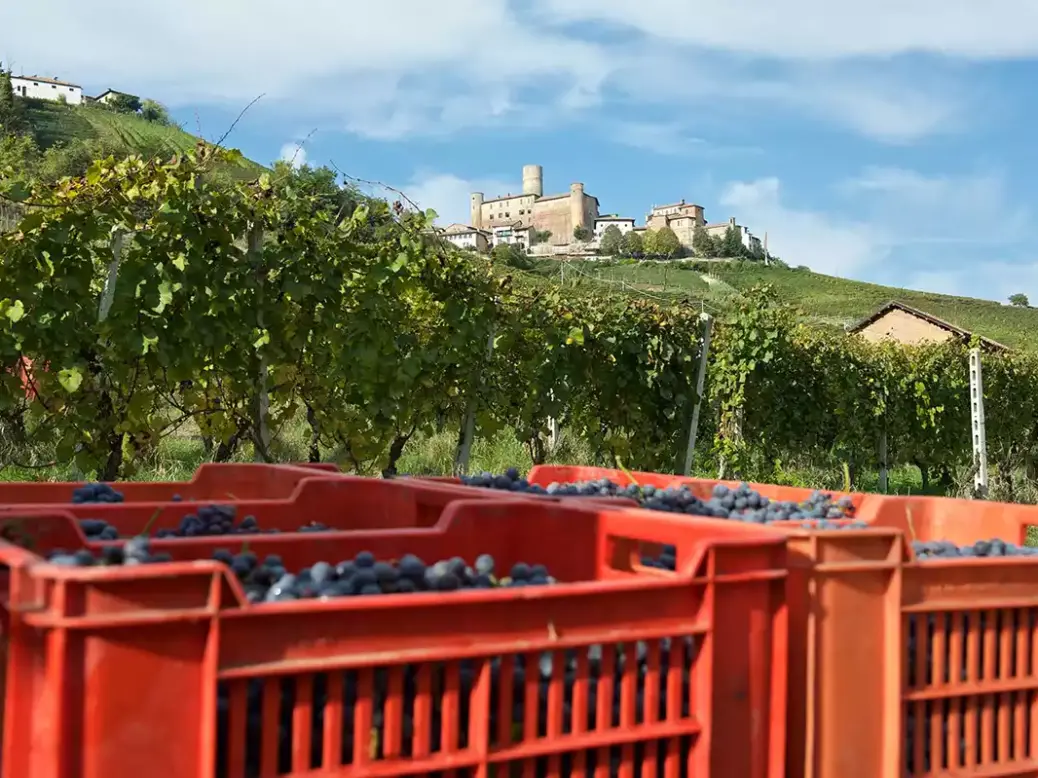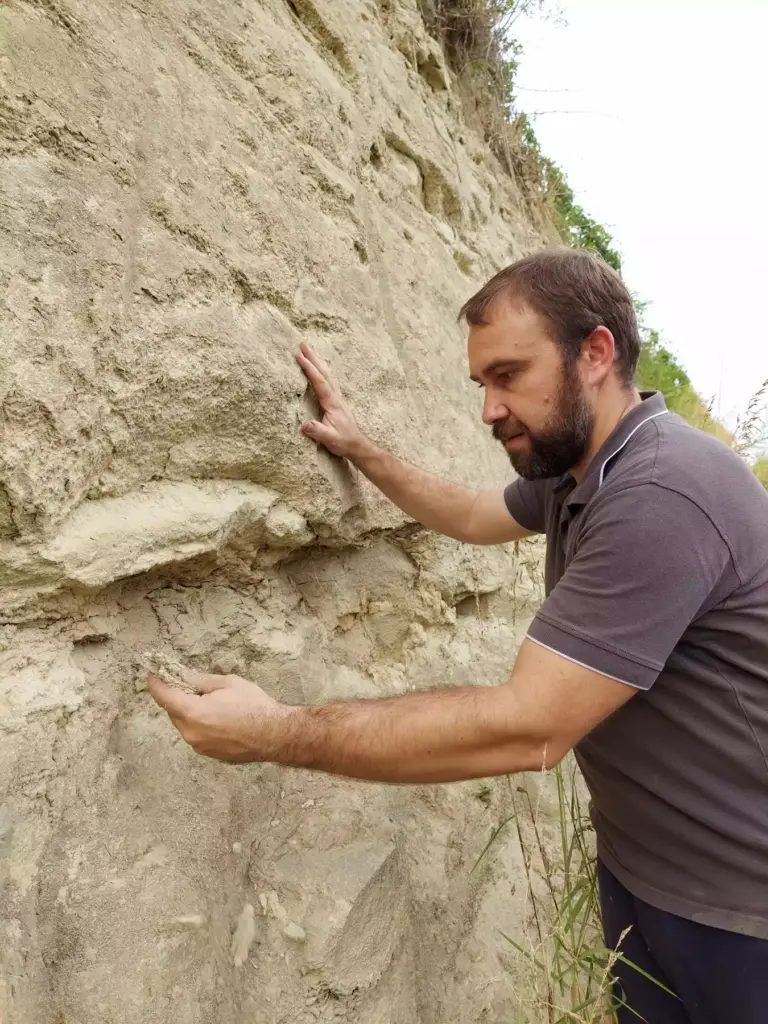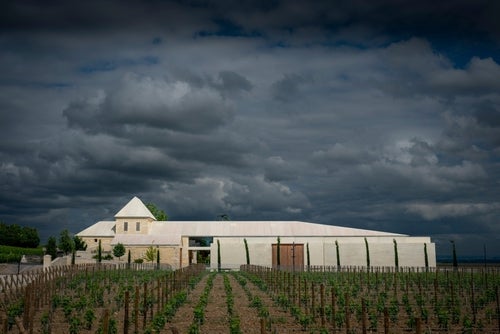
After arriving from a balmy Singapore to an early winter’s morning in London, Luca Roagna barely had time to unpack the bags under his eyes before he was on duty at The River Café in London to present Justerini & Brooks’s well-heeled customers with some of his finest wines from Barolo and Barbaresco.
Luca Roagna is the fifth generation of the family, which, although it has been based in the village of Barbaresco for centuries, considers the 1880s as the turning point for the estate’s wines. In 1890, Luca’s great-grandparents Vincenzo and Rosa produced the first bottle of Barbaresco in the so-called modern—but now traditional—style.
Today, Luca and his father Alfredo produce wines from 15ha (37 acres) of vineyards, half of which are in Barbaresco, the other half in Barolo, plus a tiny amount of Timorasso from a vineyard in the Colli Tortonesi. Before Luca’s time, his grandfather Giovanni and father Alfredo made classic Barbaresco from a blend of grapes from across the vineyards. Single-vineyard wines were few and far between, although in great vintages such as 1971 and 1978 Alfredo Roagna did make a small amount of single-vineyard Asili Barbaresco.
Born in 1981, Luca started working in the family vineyards with his father in 2001, after graduating from the Alba School of Enology, making the decision to start producing single-vineyard wines—including Asili, Montefico, Pajè, and Pira—in 2004. The years from 1959 to 1994 had been mostly cold vintages, making Nebbiolo—early to bud and late to harvest—difficult to get perfectly ripe. The talk was always of southerly exposition, but as the climate has gradually warmed, Luca says, “I never talk about exposition, because it’s more important to talk about soil composition.” He is convinced that the distinctiveness of each wine is based on small variations in the composition of the Langhe’s marine sedimentary soils, which contain alternating layers of calcareous clays with bluish grey marl and sands.
His father is the classic old-school farmer, starting work at 4am, nose to the daily viticultural grindstone. The vineyards have always been worked naturally, with minimal chemical inputs, so by the time Luca started in 2001, he was fortunate enough to inherit vineyards that were already in excellent condition. “If you fertilize the soils, the wines that result are not too interesting. But if you have grass in the vineyard, it creates competition close to the surface for the vine, so the roots go deeper,” says Luca. “My grandfather always said that the first meter [3ft] of ground is for potatoes only.”
Worth the time and work
Cometh the hour, cometh the man… and the time to stop cutting the grass, to allow competition. As the climate has become warmer, the grass retains the moisture needed to keep the soils cool. There is no green-harvest because, with naturally low yields from pruning to five bunches per vine, it’s not necessary. “The beauty of the wines comes from the saltiness, the minerality, so we never release a top wine from young vines,” explains Luca. When the vines are less than 25 years of age, he doesn’t make Barolo or Barbaresco. When the vines are more than 25 years old, Roagna makes a single-vineyard Barolo and Barbaresco; and when they are more than 50 years old, the Roagna Vecchie Viti Barolo and Barbaresco, both introduced in 2007.
Even with climate change, the Roagna family consider themselves fortunate, thanks to a continental climate and temperatures rising to around only 86°F (30°C) on a typical summer’s day in August, moderated by proximity to the Alps. Maintaining the freshness in the soil thanks to the grass, in an average year with rainfall between 28 and 32in (700–800mm), picking normally takes place around mid-October, two months after veraison. “With the grass, we grow a cover crop of many species of plants, including mint and clover,” says Luca. “With a diverse population of vines derived from massal selection in a habitat that’s in balance, this biodiversity allows for greater complexity in the ultimate expression of the wine.”
It used to be traditional to graft unproductive ancient vines needing replacing onto American rootstock. After two years, they would plant out the vines that had taken well to the graft. It was a labor-intensive process, and the task of propagating the vines was given to the nursery, which would send them back in large numbers to be planted out. Not convinced that the results were uniformly good, however, Luca decided to revert to the traditional practice. After an initial reluctance, his father agreed to train him in the process, and despite all the extra work, he’s much happier with the results.

Expansion and evolution
With 12,000 bottles of a total production of 60,000 bottles, the Barolo Pira, made from 4.88ha (12 acres) of vines, is now Roagna’s largest-volume wine. In 1989, Alfredo and Luigina Roagna bought the historic Cascina Pira near the fortress of Castiglione Falletto, initially owned by a family of aristocrats hundreds of years ago. The original label of La Rocca e La Pira was then changed to the Pira name. Southeast-facing, the soils—with their alternating layers of white limestone, gray and blue marl, and sands, with a high proportion of minerals, including iron—are some of the oldest in Barolo.
The Pira vineyard, with an average vine age of 40 years, is divided into six parcels according to soil composition and age. One of the six parcels, planted in 1937, an old massal selection, is the source of the Pira Vecchie Viti. In 2015, they added 0.48ha (just over one acre) of the Rocche Castiglione vineyard. The soils here, comprising white stones with sand, bring structure, tannins, and complexity, while, according to Luca, the sand component helps to bring a touch of extra finesse.
In 1953, Luca’s grandparents Giovanni and Maria Candida bought the historic Cascina Pajé vineyard in Barbaresco. South- to southwest-facing, the soil is composed of calcareous marl and limestone, which is found in the highest proportion in the Crichët Pajé parcel. In 1958, Giovanni started to bottle, for the family’s own use, a small selection, known from 1978 as Crichët Pajé, meaning “little hill” in the local dialect. With a long maceration and eight years in barrel, the last part of the aging process takes place in concrete. The average production is limited to around 1,800 bottles and can go as low as 700 bottles in vintages such as 2012. Luca considers Crichët Pajé their vineyard with the greatest structure, complexity, and aging potential.
In 2014, the Roagna family decided to buy a small, 0.8ha (2-acre) vineyard of Timorasso. At an altitude of nearly 1,500ft (450m), one parcel here was around 50 years old, the other planted more recently. The yield is between 20 and 30hl/ha. Aiming to make a white wine with freshness and aging potential, they look for an oxidation of the must, pressing without the addition of sulfur and removing the gross lees after 24 hours, then fermenting in oak with natural yeasts and keeping the wines in barrel for two years. “We like to play with the oxidation of the must and reduction of the lees,” says Luca.
For Luca, as long as the grapes are perfectly ripe, vinification should be closer to infusion than to maceration. “If you work too hard to extract the tannins, you can end up with aggressive tannins—which is precisely what we are aiming to avoid.” After a long, gentle extraction of between 60 and 100 days, using a submerged cap and only wild yeasts, he stresses the importance of the type of oak vessels used—in essence, conical French oak vats that vary in size up to 5,000 liters.
In order to avoid any overt wood flavors, he asks the cooper for top-quality oak barrels, whose staves are seasoned outdoors for ten years before being steam-heated to ensure that the wood is as neutral as possible. With very thick staves, a slow oxygenation allows for the ideal polymerization of the tannins. The Dolcetto, Barbera, and white wines are fermented in them first, and they are then used for the Nebbiolo wines, which remain in cask for at least five years.
Observing that, due to climate change, the 2012, 2015, 2017, 2018, and 2022 vintages have all been sunnier and warmer than usual, Luca has started to work with a small proportion of whole-bunch, between 5 and 8 percent, to retain the extra energy he feels the wines need if they are to avoid a loss of freshness. 2011 was a little sunnier than the “perfect” 2010 vintage, but the heat of the late spring and summer was not as problematic as in the torrid 2003 and 2022 vintages. Luca believes that the vines are now better adapted to the warmer climate than they were in the early 2000s and that the experience of knowing how to manage the vines in both the vineyard and the winery—in particular, recognizing the best moment to harvest—has brought further improvements in its wake.
Tasting
The River Café, London; February 7, 2023
Roagna Montemarzino Timorasso 2019 (13.4% ABV)
Yellow gold. Peachy aromas, but with a freshness as well as a depth to the wine, showing lovely fruit purity, with an almost austere, refreshing character and fine-textured quality. Medium- to full-bodied at 13.4% ABV, this dry white is rich yet savory, and with a mouthwatering lemon-citrus and mineral feel, it fleshes out and becomes sweeter with food. 2023–28. 93
Roagna 2016 Barolo Pira (14% ABV)
Bottled in August 2021, this is a deep, youthful ruby, with an overt sweetness and spiciness of fragrance; floral, too. When you taste it, that voluptuous richness of cherry-fruit purity spreads across the tongue, with a savory element building, and the tannins, while initially adding to that savory character, gradually melt away even as they hold the fruit together in a light, sinewy grip. Real melt-in-the-mouth stuff to accompany The River Café’s gnocchi alla romagna, with nutmeg, Parmesan, and sage. 2023–35. 94
Roagna 2016 Barolo Rocche di Castiglione (14% ABV)
Paler than the Pira, closer to garnet in color, with a more savory aromatic quality. This shows cherry sweetness at first taste, its mouth-filling, intense cherry-fruit quality just a little drier and grippier in texture. But the dryness yields to a gradual softening of texture as the first impression of fruit richness changes to savory, on a finish that’s more mineral than fruity as it meets the gnocchi; a very grown-up red. 2023–40. 95
Roagna 2011 Barolo Pira Vecchie Viti (13% ABV)
Shading to garnet and starting to show some evolution, this old-vine Barolo is perfumed, with a floral and cherry/strawberry bouquet, whose sumptuous maturing fruit quality signals a core of mid-palate strawberry, cherry richness, and old-vine concentration. An expressive Nebbiolo, this is easing its grip into seductive middle age, with both finesse and intensity. Still incredibly youthful, with barely a hint of age; it’s a delight, albeit a tad drier than the Pajè below. 2023–35. 95
Roagna 2011 Barbaresco Pajè Vecchie Viti (13% ABV)
Still youthful in color. The fine bouquet shows complexity, with fragrant, light spice and sweetly ripe cherry notes. The aromas are followed by an intense richness of cherryish fruit in a cocoon of silky soft tannins; seamless, yet structured by an underlying spine of minerally acidity. There’s a beautiful balance and effortless concentration, as the texture feels so gentle and rounded, with no hint of wood other than the suppleness of the wine itself. 2023–33. 96
Roagna 2013 Barbaresco Crichët Pajé Vecchie Viti (14% ABV)
A youthful ruby, holding its color well; an alluring bouquet mingles kirsch cherry and spice, while the richly concentrated dark cherry fruit is opulently rich on the mid-palate, with a textural quality that’s beautifully resolved. Halfway through comes a structure of firm, sinewy tannins and classic acidity, which kick in to underpin all that voluptuous fruit with a mineral support system that ensures a decade or more of further aging. 2023–35. 97






